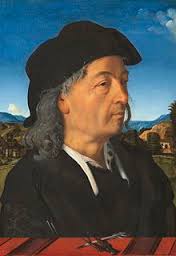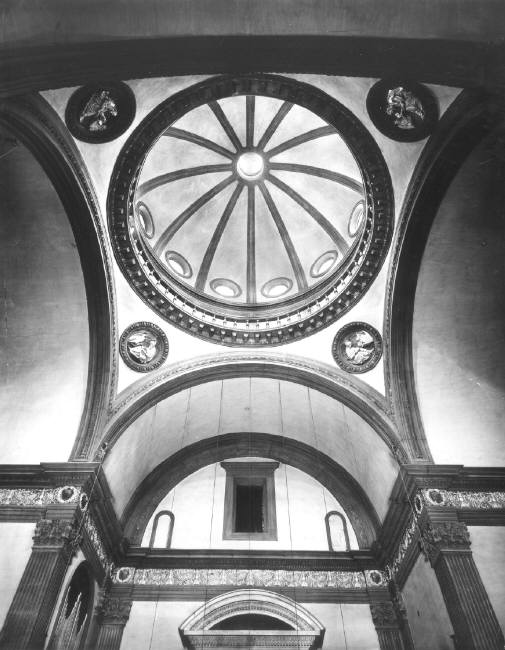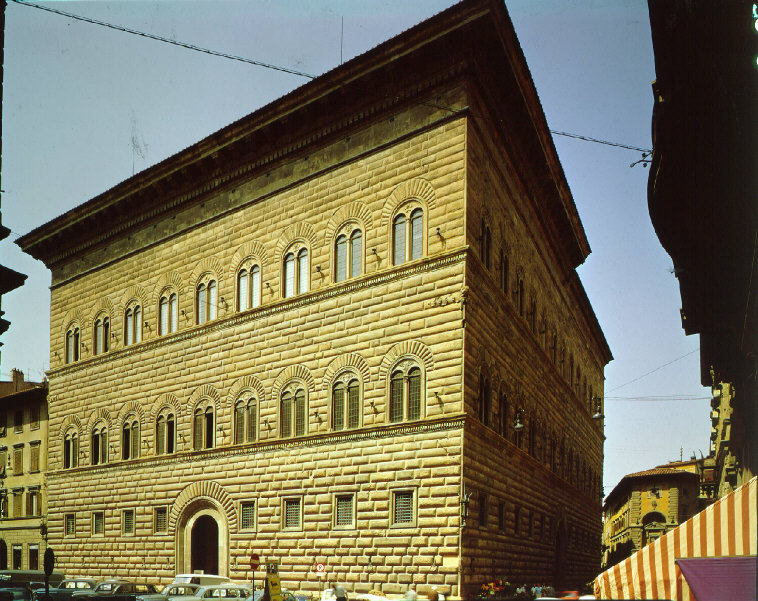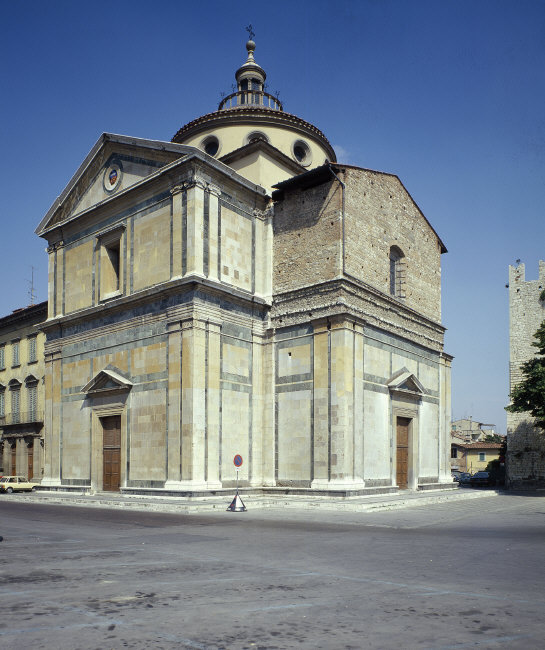A study day – actually a pair of study days – devoted to Giuliano da Sangallo (1516-2016) is offered 17-18 November at the Kunsthistorisches Institut in Florenz – Max-Planck-Institut. Organized through a collaboration amid the KIF and École Pratique des Hautes Études (Sorbonne) and the Gabinetto dei Disegni e delle Stampe delle Gallerie of the Uffizi Gallery, the conference’s theme is that of a renewed appreciation of the mysterious figure.
According to the KIH:
The 500th anniversary of the death of Giuliano da Sangallo offers the opportunity to examine the ambivalent reception of the artist’s work. Indeed, although he was a crucial figure in the architectural panorama of his time, Giuliano’s output and personality remain elusive. His fragmentary and sometimes misunderstood oeuvre has often been described as caught between two styles and two eras, the Florentine Quattrocento and the Roman High Renaissance. … Similarly, his corpus of drawings and the technical characteristics of their execution offer an alternative understanding of the “evolution” of representational conventions over the course of the Renaissance, one which challenges the traditional history of an improbable linear progress in this field. Furthermore, Giuliano da Sangallo’s interactions with and responses to his contemporaries are still to be explored. The overlaps and continuities within his large family of sculptors and architects – starting with his brother Antonio the Elder and ending with his son, Francesco, in Florence, and his nephew Antonio the Younger in Rome – also invite further research. In particular, the techniques, morphologies, and evolution of the fortifications that have been attributed to Giuliano and Antonio the Elder offer a wealth of possibilities for further study.
Giuliano da Sangallo is mostly known through his sketchbooks, recording a vast array of ancient buildings and architectural details. One of his few executed designs, however, for Lorenzo de’ Medici, the Villa Medici at Poggio a Caiano, is as key structure of the Florentine Renaissance.
Reference: Caroline Elam. “Sangallo, da.” Grove Art Online. Oxford Art Online. Oxford University Press. http://www.oxfordartonline.com/subscriber/article/grove/art/T075691pg1.
Giuliano da Sangallo. Crucifix, c. 1480-90. Villa La Quiete, Florence. Photo: Wikimedia Commons.
Giuliano da Sangallo. Architectural detail, Palazzo Gondi, Florence, c. 1490-1501. Photo: Wikimedia Commons.
Piero di Cosimo, Giuliano Giamberti da Sangallo,1482-1485. The Rijksmuseum, Amsterdam.
Giuliano da Sangallo. Interior view of the dome of the Saint Maria delle Carceri, Prato, begun 1485. Scala/Art Resource, New York City.
Giuliano da Sangallo. Saint Maria delle Carceri, Prato, begun 1485. Scala/Art Resource, New York City.
Benedetto da Maiano and Giuliano da Sangallo. Palazzo Strozzi, Florence, begun 1489. Scala/Art Resource, New York City.
Further Reading: Hale Cronin and Elton Penrose. The Florentine Renaissance: The Flowering of the Renaissance. London: Folio Society, 2016 (reprint of 2001 edition).
Niall Atkinson. The Noisy Renaissance: Sound, Architecture, and Florentine Urban Life. Philadelphia: Penn State University Press, 2016.





